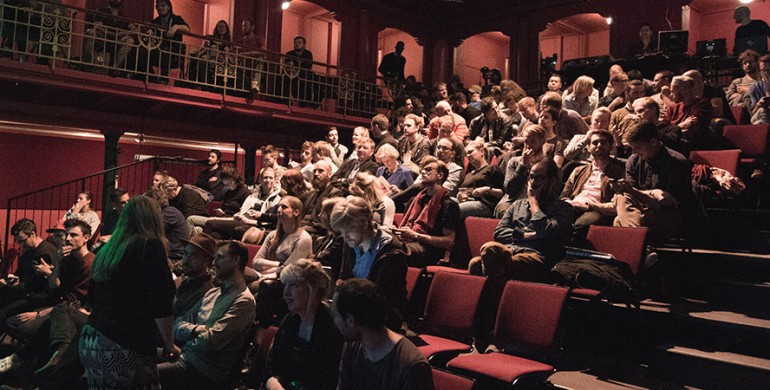Looking Back on Coded Matter(s) #9: High Fidelity
Review by Sebastien Robert
Photos by Jessica Dreu
Approximately one year after Coded Matters #7: Extended Senses the FIBER community gathered again at Vlaams Cultuurhuis de Brakke Grond in Amsterdam. The familiar venue, which hosted many Coded Matter(s) editions in the past was once again the location for Coded Matter(s) #9: High Fidelity, an evening programme dedicated to human and computer perception, and what lays behind the technologies that we use daily.
The weather was considerably more rainy than described in the review of Coded Matter(s) #7 but still, the evening took place in a warm and cozy atmosphere. Following a quick introduction by FIBER’s Creative Director Jarl Schulp, moderator of the night Michelle Kaspzak kicked off the festivities with an introduction to the ‘High Fidelity’ theme, and some historical background on Artificial Intelligence.
A modern concept? Actually, not really. The first documentation of Artificial intelligence goes back to 1770 with the Mechanical Turk, a fake chess-playing machine constructed by Wolfgang von Kempelen by order of Empress Maria Theresa of Austria. The same name would later be appropriated by Amazon for its crowdsourcing Internet marketplace.
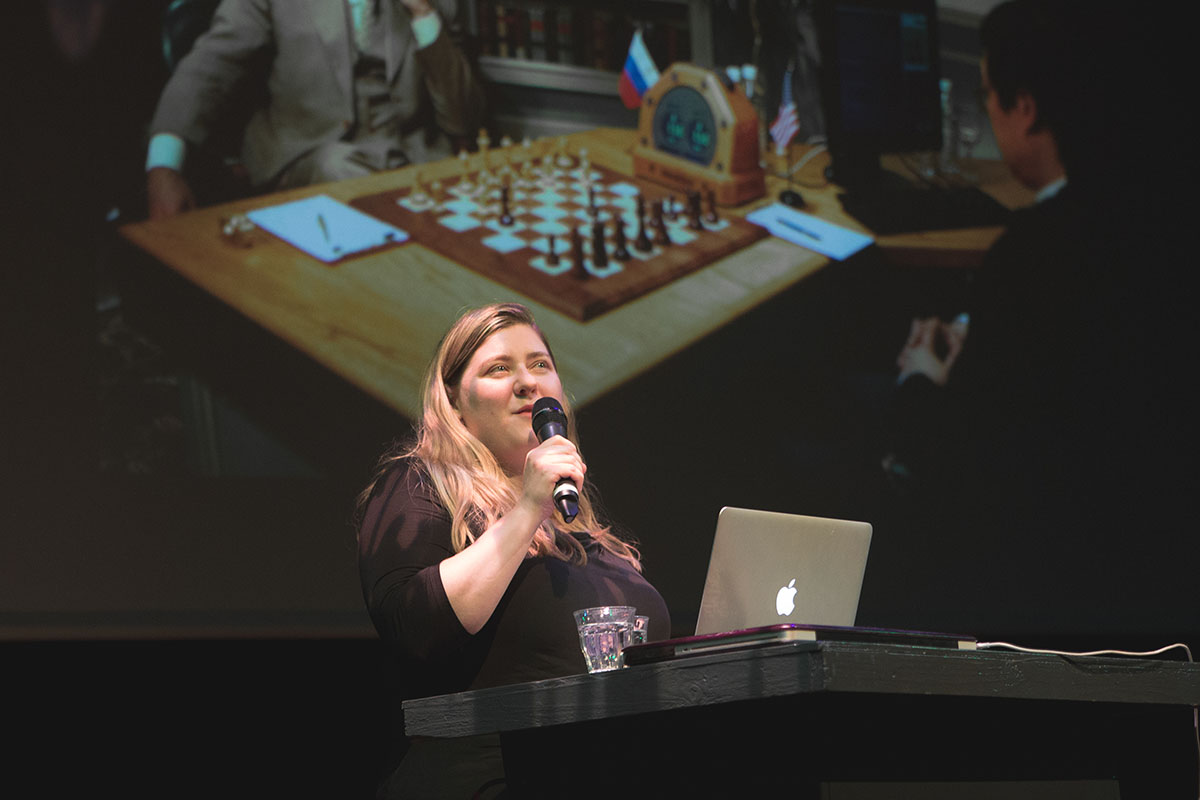
Michelle Kasprzak – moderation & introduction
Michelle laid the basis of the following keynote by outlining some general questions. How far can technology go? What is the purpose of pushing visual technology to the extent that even the human eye can’t see the results? Are these improvements in technology only made for machines? If we look at the Hubble photograph of Andromeda Galaxy for instance, we would actually need more than 600HT television to display it. What’s the point?
The purpose of this evening was clear: tonight we will see ‘things that are beyond our comprehension.’
Beyond our comprehension. There was no better way to transition to the first presenter of the evening, glitch artist Rosa Menkman and her latest work entitled ‘Beyond Resolution.’ Periodically misunderstood–one of her works was described as a “bad video game” by the Wire–Rosa explained how her so-called failures brought her to where she is now. Coming from a glitch-oriented approach, resolution began to emerge as a recurring theme in her research and in her artistic work.
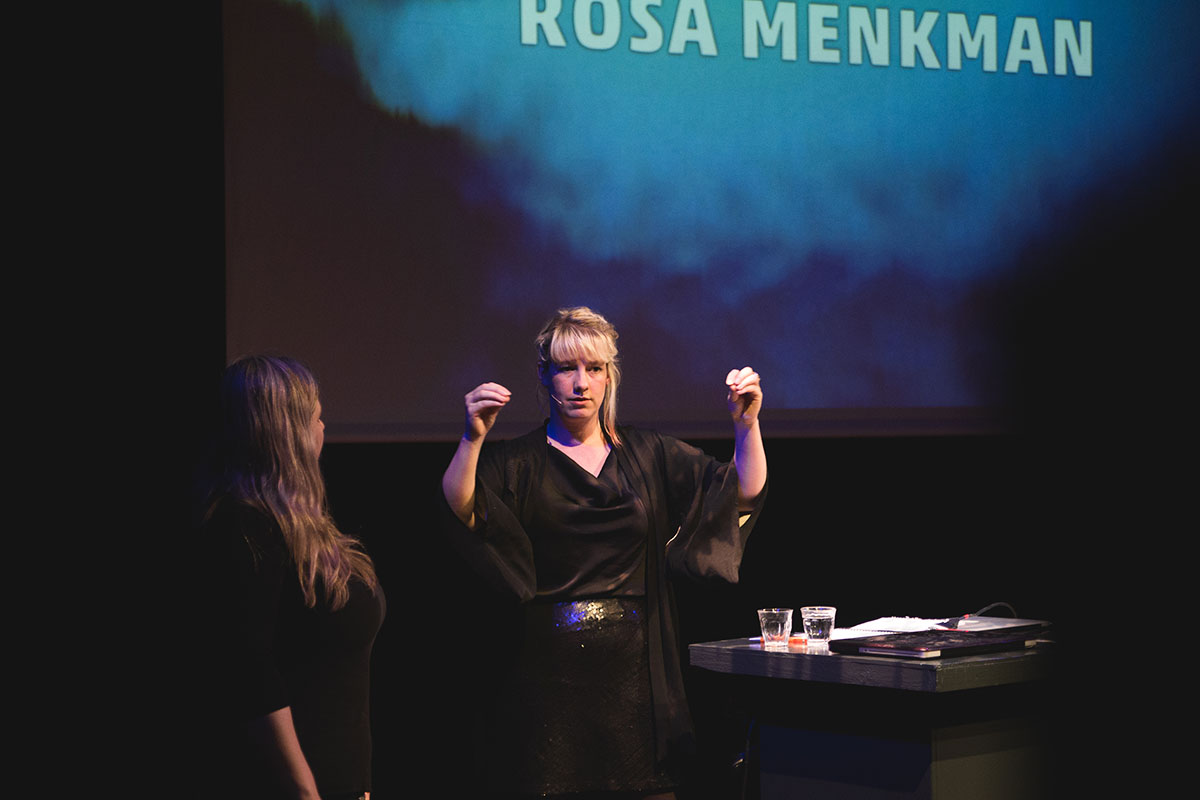
Rosa Menkman
During her presentation, Rosa also emphasized the importance of context when viewing any kind of video. Indeed, because the viewing context conditions both the user and the platform itself, it will have a strong influence on our perception of the work. For instance, consider the standardized video format of four corners. What would a different format look like, and how would that condition our perception differently?
But it was an experience in Moscow that marked a turning point in Rosa’s artistic vision. She was asked to perform during an indie rock show, only to find out that the projection screen was black (!). The production team could only reiterate that it was the highest quality screen out there. Even better, Rosa soon realized there was a delay in her signal while performing–her video performance was being monitored, and could be instantly altered if the organizers declared the content inappropriate. That’s when she realized that ‘signal is only one part of the whole thing.’
The resolution is not only about a screen. For Rosa, resolution is a tension between different actors and the technology behind each of them. It’s all about depth, thickness, density, frame rate, and speed. But it’s also a compromise, and like every compromise, there is a limit. Rosa pushes this limit by asking us to think outside of it, advocating the end of the ‘Tyranny of 4 Corners.’ How could we escape from this standardisation? One way is to create our own tools.
Next was Steven Puttemans, member of the KU Leuven-based EAVISE research group, and the second speaker to take the floor. Steven’s ongoing academic research with this young collective focuses on computer vision and artificial intellgence–two topics which also guided his presentation in the Coded Matter(s) #9 evening programme.
The aim of the research is using artistic and academic developments to implement new practices within industries, optimizing algorithms, and increasing the robustness of new technologies often considered weak. Steven showed us several applications EAVISE had custom made for industrial partners, mainly based on tracking systems and visual object recognition. These applications, among others, included ‘Fallcams’ to detect in real time when an elderly person falls in their home, and tracking systems able to map the movement of our eyes while wearing glasses.
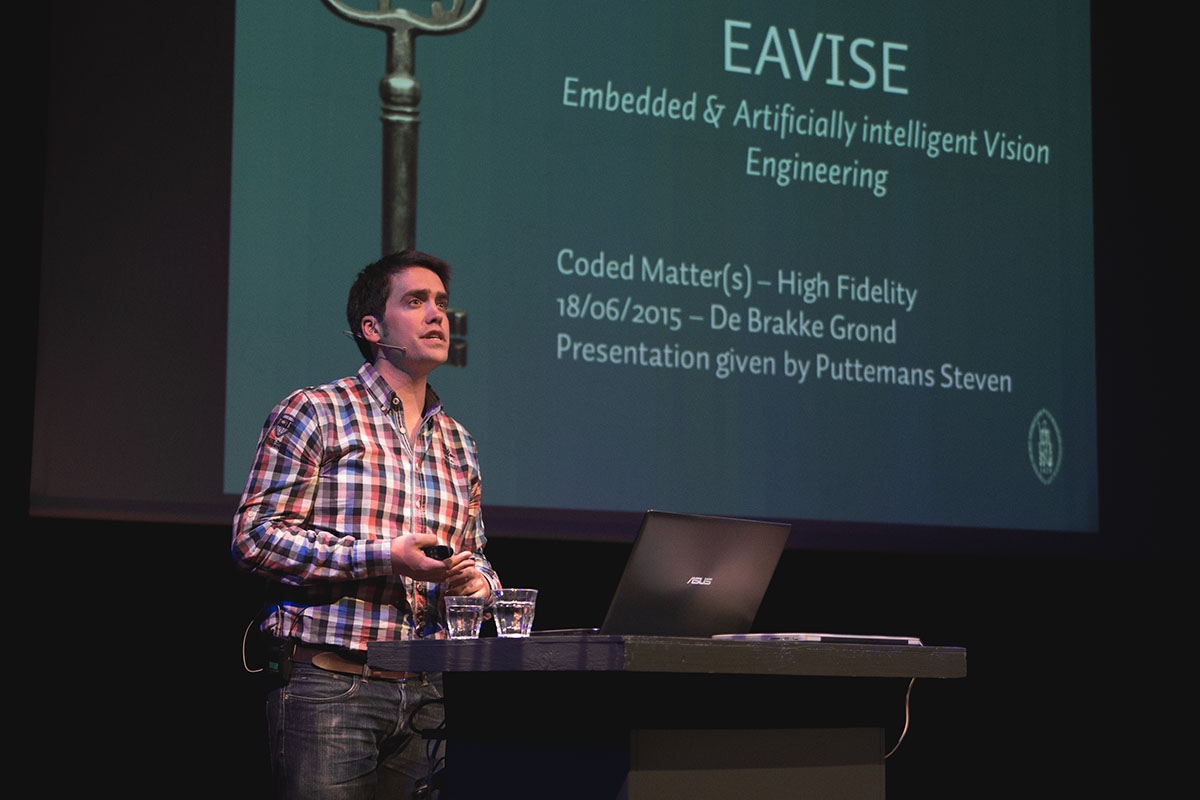
Steven Puttemans
Steven insisted on the difference between object recognition/identification–in which the technology is able to precisely select object on its own–and object detection/categorization/classification–in which the technology is able to identify an object because of its criteria or patterns. In the latter case, a high resolution is not necessary. For object recognition, a very low resolution is used (all the way down to 24 pixels) in order to catalyze the process. Otherwise it would take days. Significantly, humans can’t identify objects based on such limited data, but computers can.
This controversial presentation led to an animated debate on the consequences of such industrial practices on our society. For one of the participants, pushing forward such powerful technology gives us a pretty bleak and dystopian image of our future, not far from science-fiction movies. Where are the ethics? Where are the limits?
Steven assured the audience that EAVISE works together with scientists, psychologists, and philosophers, and that we are far from being completely controlled by technology. We still have an overview of the situation. He also added that companies are currently too steeped in competition, keeping their knowledge for themselves. By doing so, they can’t really make a big step in technological advancement. Instead, they should be inspired by the creative industries where most knowledge is in an open-source format.
After the first two intensive presentations, we all took a well-deserved break to digest and discuss the ideas and concepts that were just presented. The perfect occasion to grab some nice Belgian beers and catch up with some old friends or the evening’s speakers. Soon after, we re-entered the Rode Zaal for the next presentation by Elliot Woods.
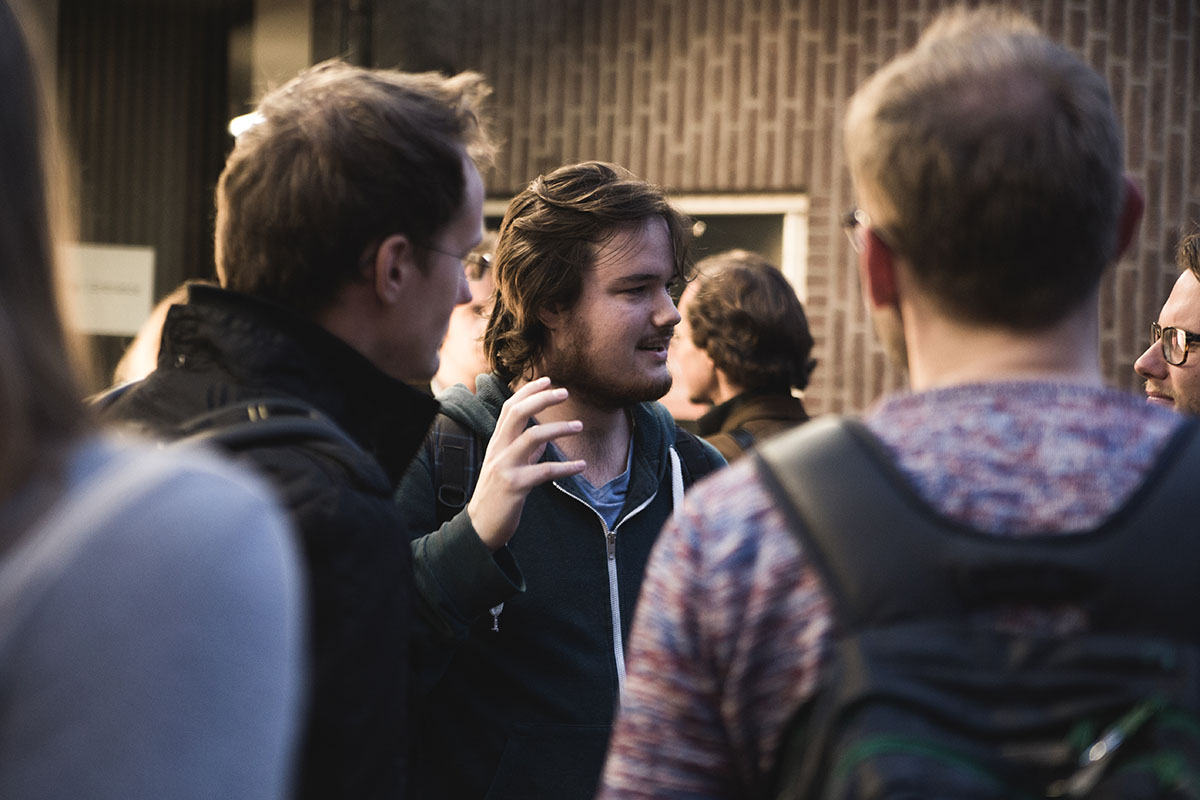
Evening programme audience
Some the audience already had the chance to meet Elliot Woods during his two-day workshop ‘Ways of Seeing (with Computers)’ which he led in the build up to the evening programme.
Elliot works at the Seoul-based studio Kimchi and Chips, which he co-founded together with artist Mimi Son.
During his “100 slides keynote,” Elliot gave us a chronological insight of Kimchi and Chips’ artworks and the main conceptual ideas behind them, as well as the ways they experiment with the barrier of digital and physical, material and immaterial. Most recently, they looked into ways of drawing in the air with light.
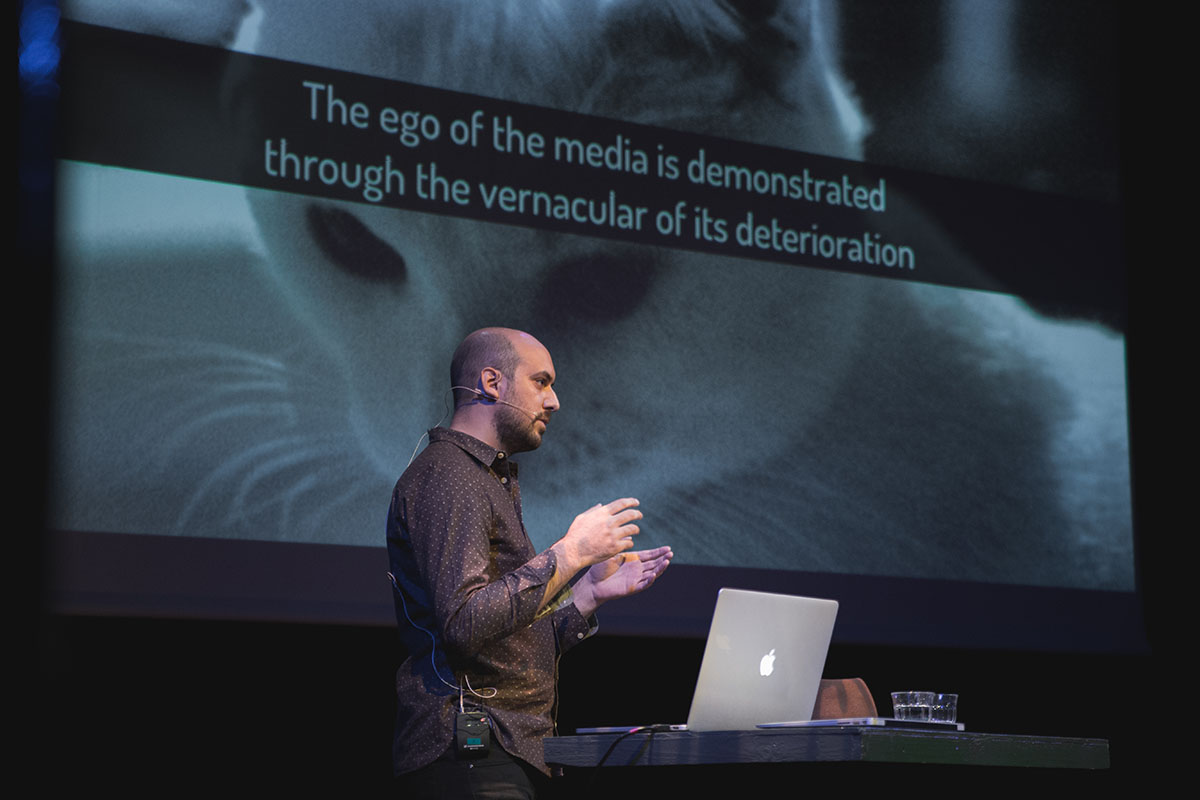
Elliot Woods
He began with the presentation of ‘Lit Tree‘ (2011) , a tree augmented with video projection that interacted with its visitors. One of the really interesting outcomes of the work was how the light triggered photosynthesis effects, and actually helped the tree to grow. He continued on with ‘Line Segments Space’ (2013), an installation made of thread that creates architectural forms on which light is projected, consequently giving a physical expression to the light.
Kimchi and Chips were asked to present this installation at the Jeju Museum of Art in Korea. Due to the concrete, squared architecture of the museum, they had to reconsider their work, which led to the creation of ‘483 Lines.’ Using the same kind of nylon thread, Elliot and Mimi decided to stretch the string between two spaces 16 m apart, ending up with 483 horizontal lines, in reference to the NTSC standard pre-digital video resolution. Elliot concluded his speech with the presentation of their latest work, ‘Light Barrier,’ which was created for STRP Biennale earlier this year in Eindhoven. He showed us the intricate details of the mirrors used in this project and how they hacked the projectors to increase their brightness. He aptly called the result ‘black and bright.’
In a shift of atmosphere, artists Martijn van Boven and Gert-Jan Prins took the stage for the final presentation of the evening. Together they created the performance ‘Black Smoking Mirror,’ presented for the first time at EYE Film Institute last year in November, and later at Transmediale in Berlin. The performance was a success: through the use of a powerful laser, a large screen was ignited on stage.
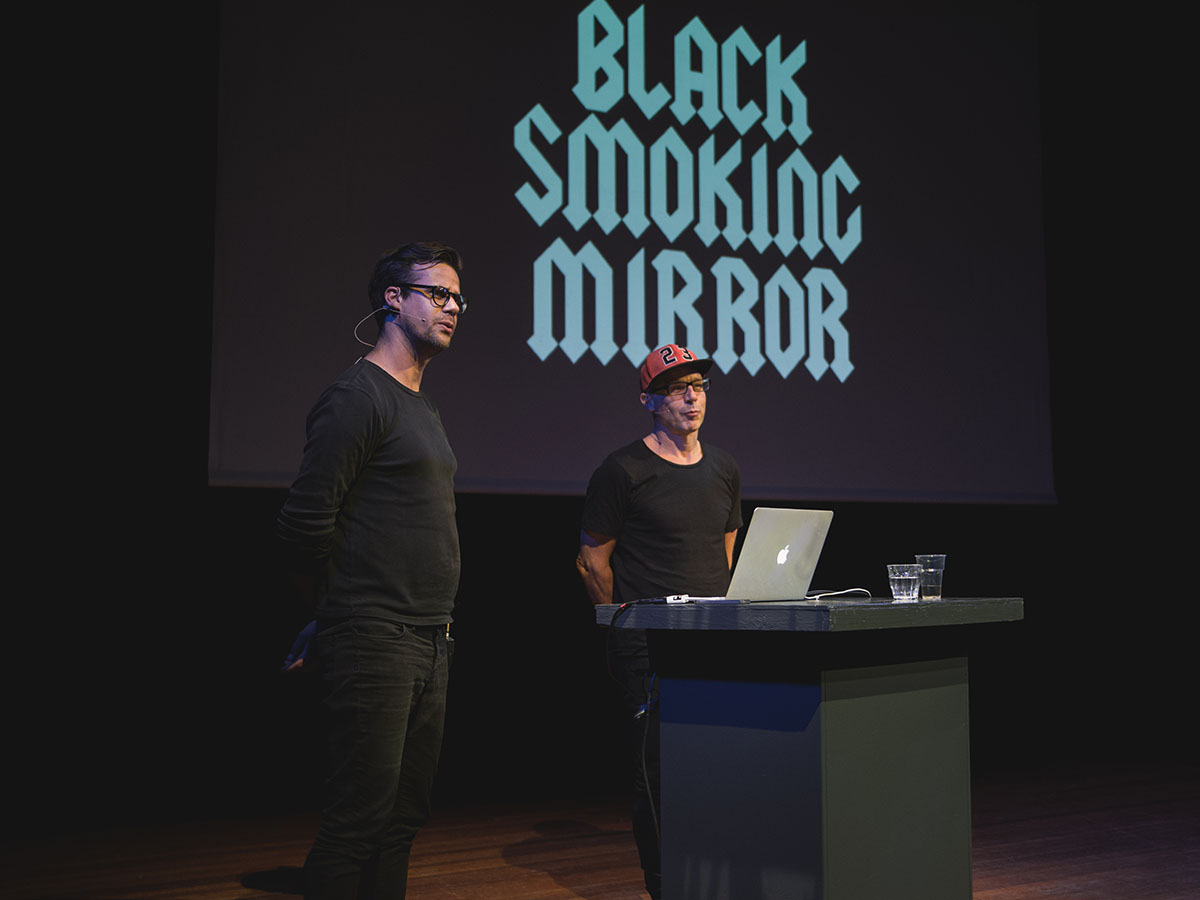
Martijn van Boven and Gert-Jan Prins
Martijn and Gert-Jan explained in detail their laser-based research by way of an exciting story complete with hilarious anecdotes. Their journey started when they bought a second-hand laser on Marktplaats. From there they tried to burn random wood surfaces and looked for ways to increase the speed of the process, which initially took hours. They decided to hack the laser, and added some gunpowder directly on the surface of the screen to boost its efficiency.
They were then able to engrave surfaces with laser light. Martijn and Gert-Jan’s approach differs from the traditional one, which aims to set on fire things with light reflection. In ‘Black Smoking Mirror’, they use the radiation and heat of the light to burn surfaces.
The last audience Q&A of the evening raised questions about the consequences of such an instrument. Both artists admitted that at some point they underestimated their own tools, but that they were still trying to push the edge by increasing the resolution of the laser to make it even more powerful. At the moment they’re still limited by the distance between the projector and the engraved surface, but they’re working on it.
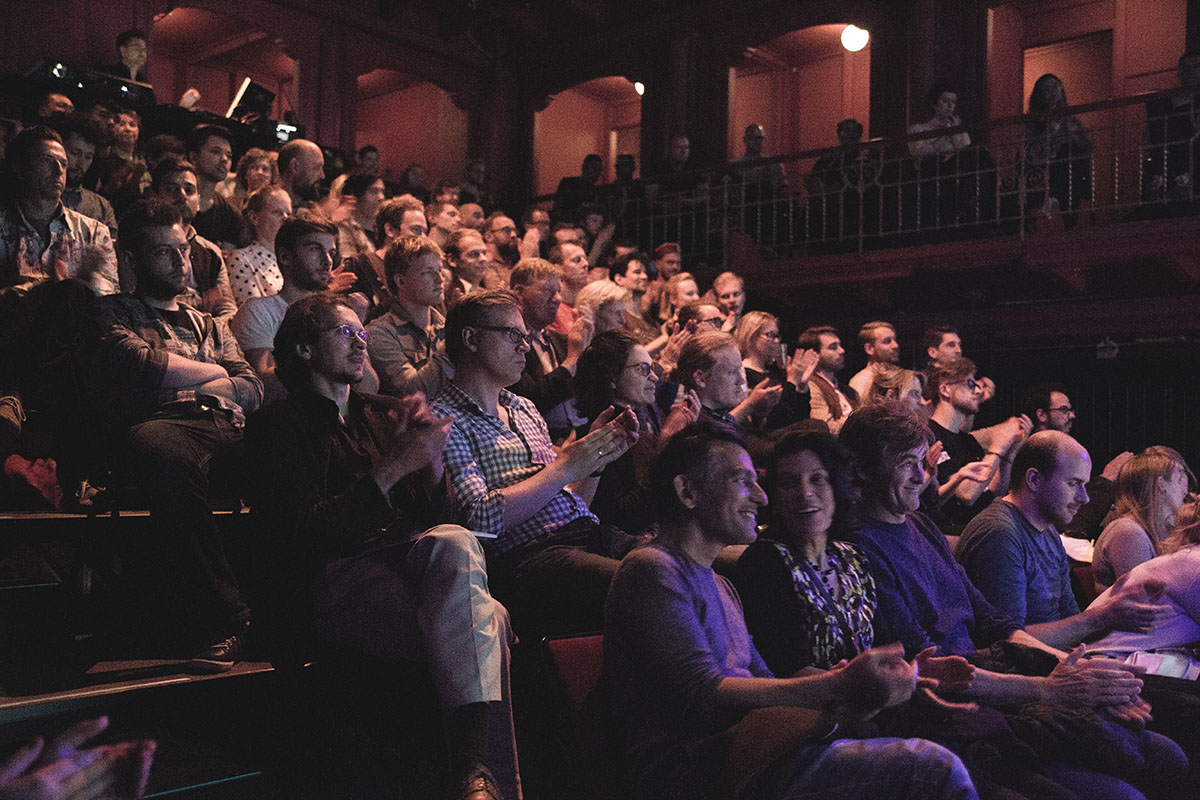
Evening programme audience
To wrap up, Coded Matters #9 could be summarized as follows: an illuminating evening packed with insights by forerunners in art and computer vision. As the audience filtered out of the Rode Zaal and into the bar of Brakke Grond, we took with us new perspectives; an interesting, provocative, and detailed overview of High Fidelity.
Sébastien Robert is the new intern at FIBER. Previously active in Smoke Machine, TodaysArt, and Mirage Festival, he’s also doing photography and electronic music.
